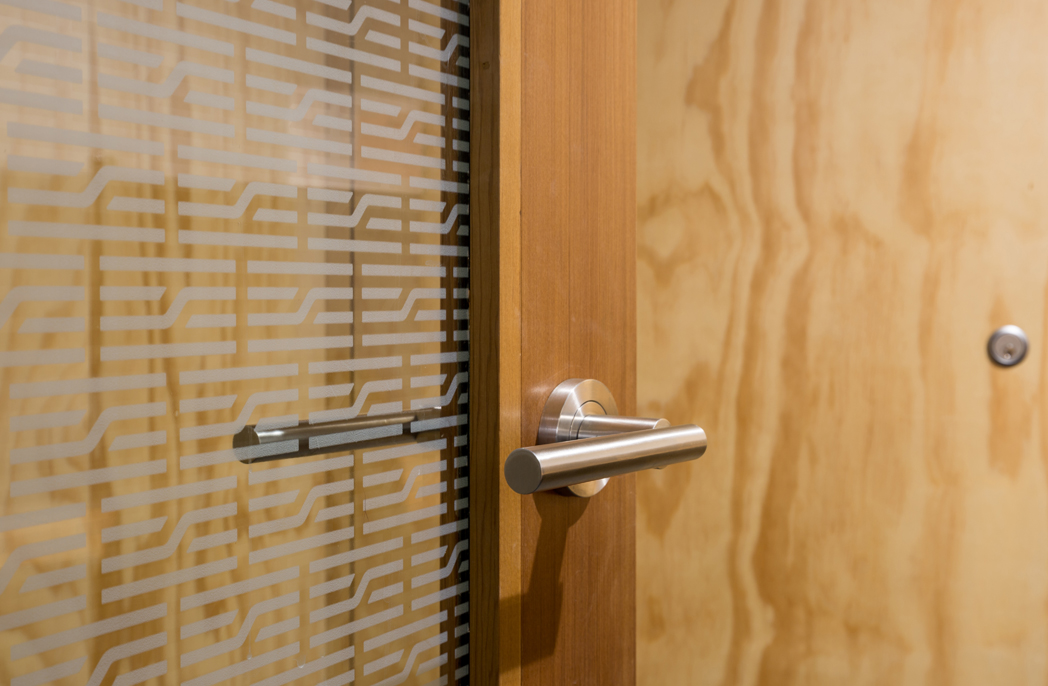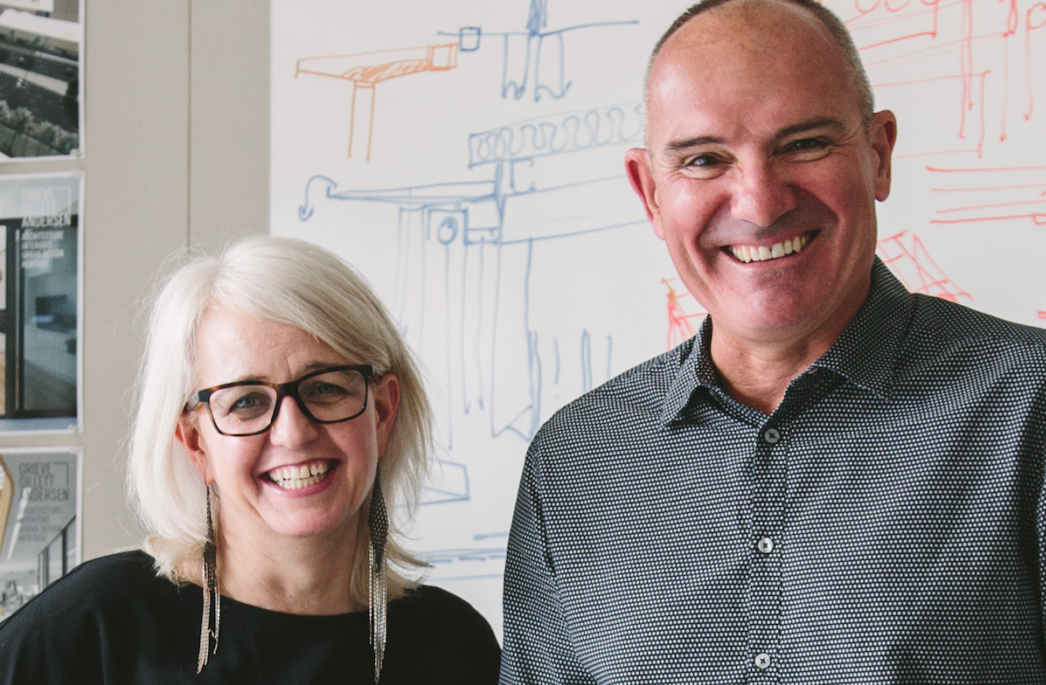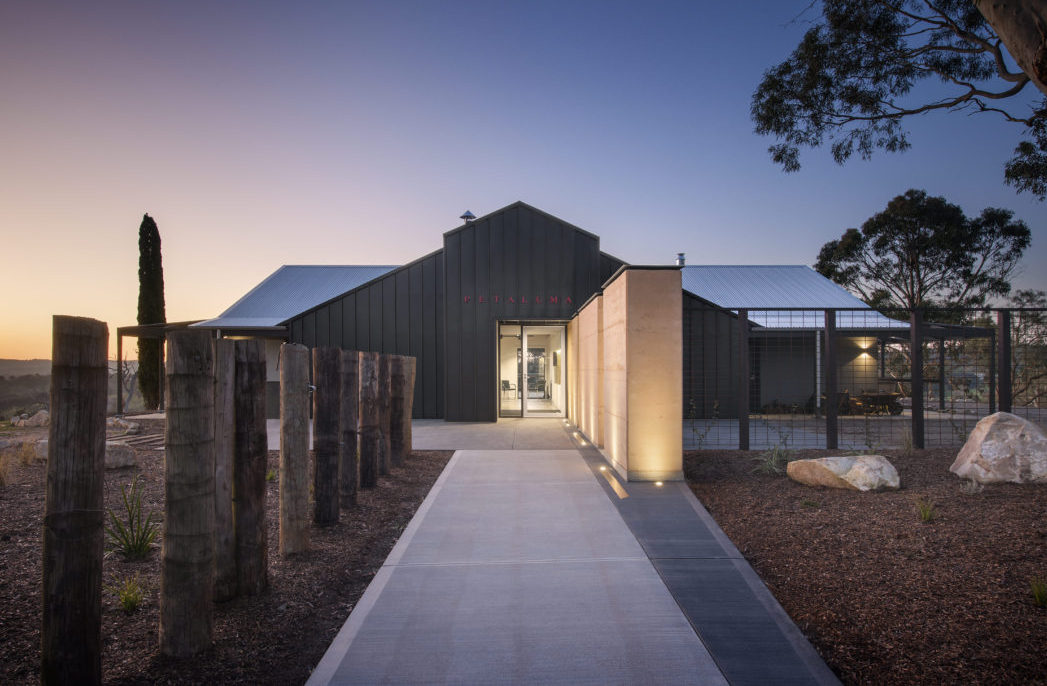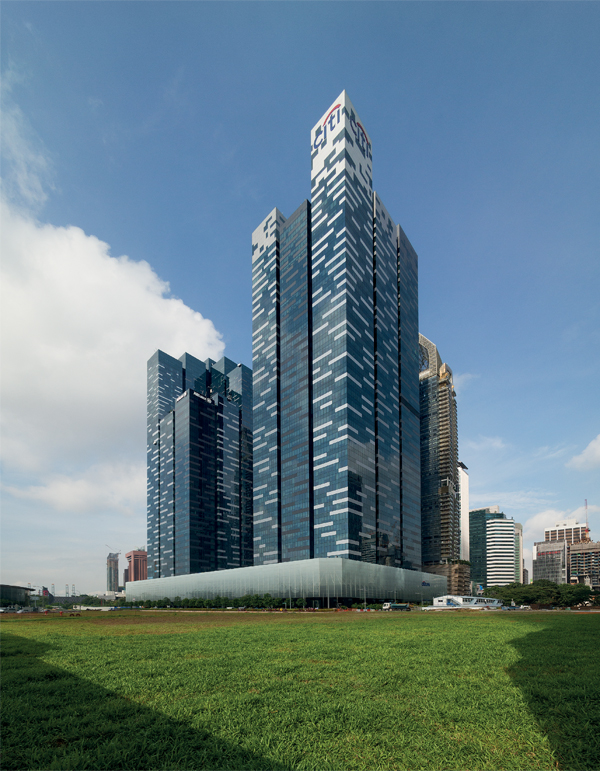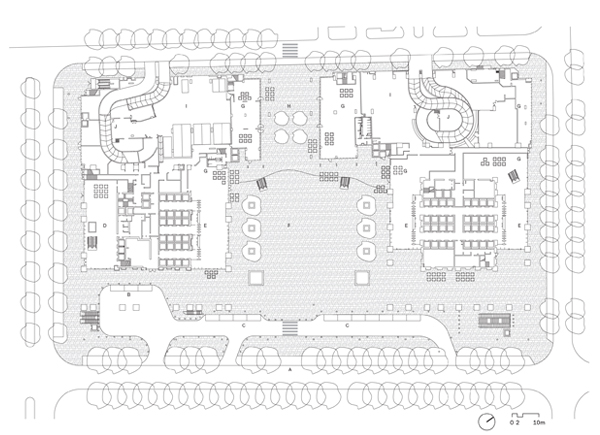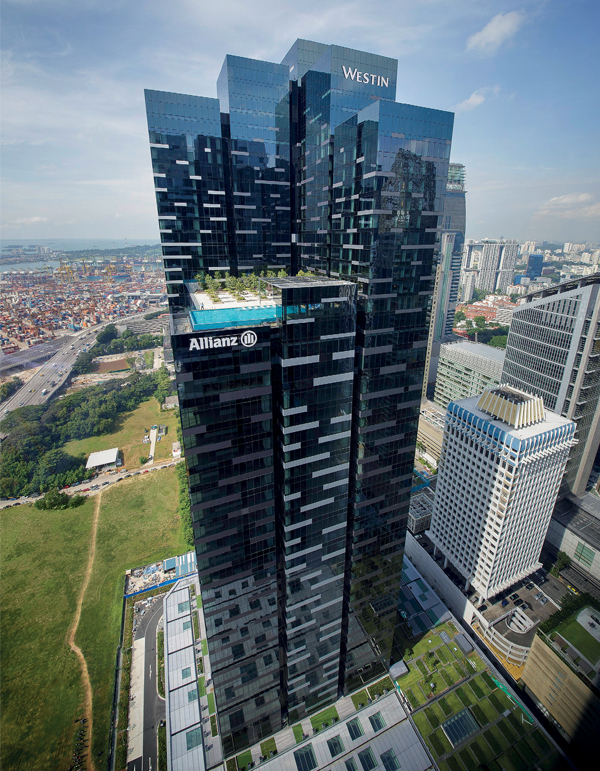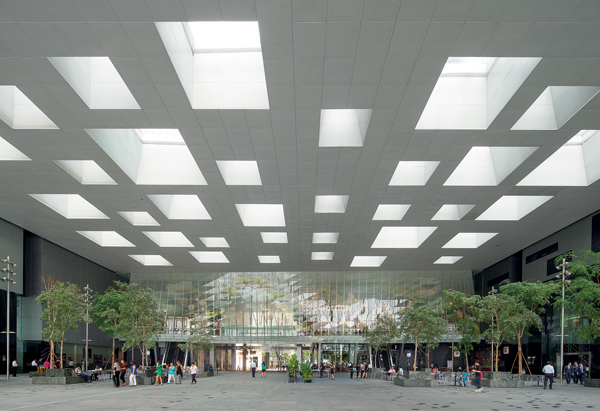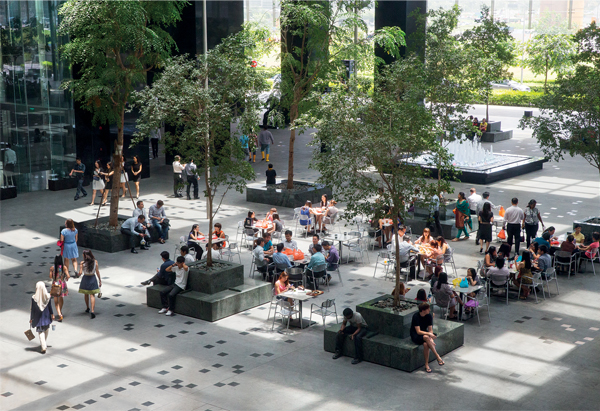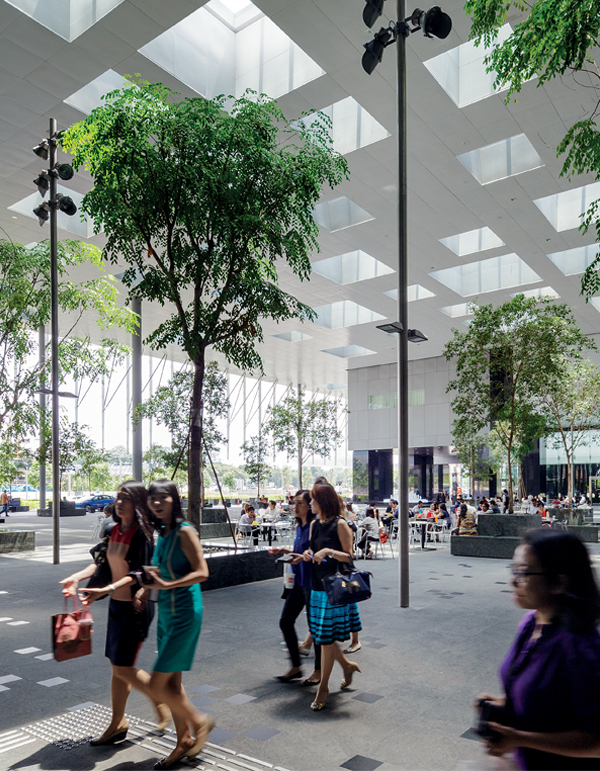
Asia Square by Denton Corker Marshall
Asia Square by Denton Corker Marshall
Share
Above image: The north-east corner reduces scale through its podium glazing.
Location: Singapore
Architect: Denton Corker Marshall
Review: Fiona Nixon
Photography: John Gollings
The centre of Singapore’s business district has always been quayside at Raffles Place. Its late-1970s to 1980s architectural heyday was marked by the construction of a pair of particularly handsome towers in Kenzo Tange’s OUB Centre (1986) and IM Pei’s OCBC Centre (1976). These buildings are elegantly proportioned, their small footprints – founded on colonial land parcels – and high plot ratios resulting in slender towers; arguably too tight-waisted for modern usage. With remarkable foresight the government anticipated this future constriction and hired Pei (after a pitch fought with Tange) to plan a new downtown to rise on reclaimed land. This land, twenty years in consolidation, has been occupied only in the last five by undistinguished off ices and apartments conceived largely by US architects. It has taken Denton Corker Marshall (DCM), working with executive architects Architects 61, to bring the conceptual and technical quality last seen in Singapore a generation ago to the new district.
The Marina Bay masterplan mandates a scale and grain supportive of the large floor plates required by today’s businesses and the strictness of its planning guidelines and control of streetscape elements ensures consistency and visual cohesiveness of the public domain. Where it fails is in its ground level connectivity back to Raffles Place. The space produced is formal and inert at the street, but buzzing with underground activity as each building and station is linked by a noodle of tunnels and escalators. Asia Square however is notable in its effort to overcome this stratification by creating a destination at level one, attempting to pull the focus of city business away from Boat Quay and towards The Cube, a vast open public arena.
DCM were awarded the commission for Asia Square in late 2007, shortly after developer MGPA secured the plot for Tower 1. Speed being of the essence (no sign yet of the bump of the GFC) the team decided to look for opportunity within the constraints of the planning guidelines, rather than risk going head to head with authorities. The envelope prescribed was very rigid, a podium of almost square shape with a crowned tower. The challenge was to dress the volume in a way that slimmed its overpadded proportions and to coordinate a hat that was not particularly ‘fascinating’.
The result (for Towers 1 and 2, on an adjoining parcel purchased months after the first) is a dark, pleated facade suggestive of the inherent weight and quality of its fabric, a material sufficiently hefty (double ‘third generation’ glazing) to hold the fold. The towers are each a gathering of nine shafts drawn up to different heights to articulate the top; further dissolved by a random patching of spandrels in shaft-specific grey shades. The 43-storey Tower 1 is entirely commercial off ice, let speculatively. Tower 2 has twenty-five percent of its floor area assigned to hotel use. This has occasioned an alternative articulation of the peak of the second tower, with the balance of cladding tipping from solid to glass. Four of the shafts flatten to a pool deck on level thirty-five, the hotel accommodated within an L-shaped plan extruded a further eleven storeys. The complexity of its form – arising but a few short steps from simplicity – generates a range of room types, many with bathrooms on the facade.
At the base of the carbon black towers is The Cube, externally a brilliant surface of crystal white glass, faceted at the corners as setbacks demand. Its lower edge is a floor above the footpath, allowing an undirected flow of pedestrians into the lift lobbies and around retail outlets. Negotiation of air rights over a masterplanned green mall allowed the sheltering of the whole intertower plaza to create a seventeen-metre high ‘city room’. The cool, food and beverage-enlivened space is reconfigurable, furniture and planting moveable for major events. The volume is punctured by only one column, critical to support a thirty-metre roof truss extending from the carpark during the phased construction. A hanging ‘food garden’ cafe elaborates on the second-storey network of walkways destined to connect future neighbours and supports a mandated travellator (pre-built and disguised beneath a dining platform). The facade of the food garden is an undulating wave of glazing, curtaining the dining area from the greater city room. Lighting is complementary, pendants sparkling like champagne bubbles behind the curving glass.
The skill in masking plant in the ultimate forty metres of Tower 2 (the full 50-metre ‘crown allowance’ was not utilised due to craning limitations) has been equally well applied in the development of the roofscape of The Cube. Skylights over the city room are detailed to conceal the louvres required for natural ventilation and smoke control. The random placement of the shafts (mirroring the tower cladding) is complemented by perimeter planters and paving. Tower tops are similarly patterned with sustainable features, including the largest photovoltaic array in Singapore, generating enough power for ventilation systems and the extensive lighting of The Cube.
Office floor plates of over 3,000sqm have been designed for layout and leasing flexibility. Additional width was allowed in escape stairs to boost the permissible population. Floor-to-floor and access floor heights are also generous and higher again at the top of each of the four lift risers. Lessons from construction of the first tower were implemented in the second, most notably in the efficiency of detailing between slab edge and facade, as well as the possibility of dropping sills to floor level without breaking the heat load limit for LEED and Green Mark platinum rating.
Asia Square is named not only for the apparent shape of its twin towers, but also for the public arena at their base, a European-inspired urban form adapted to the Singapore context. This ‘city room’, its insulated volume melted from any icy glass cube, is at the urban scale, the most important contribution from a very significant project.
Project Details
DEVELOPER AND CLIENT: MGPA
ARCHITECTURAL DESIGN CONSULTANT: Denton Corker Marshall in association with Architects 61
CONTRACTOR: AST1 – Hyundai Engineering and Construction, AST2 – Hyundai Engineering and Construction
MECHANICAL, ELECTRICAL AND STRUCTURAL ENGINEERING: AECOM Singapore
QUANTITY SURVEYOR: Northcroft Lim Consultants
LANDSCAPING: ALT Limited
LIGHTING: Brandston Partnership Inc (BPI)
ACOUSTICS: Acviron Acoustics Consultants
TRAFFIC: Duffill Watts
FIRE: Integrated Building Consultancy
ESD: Building System and Diagnostics.
You Might also Like
